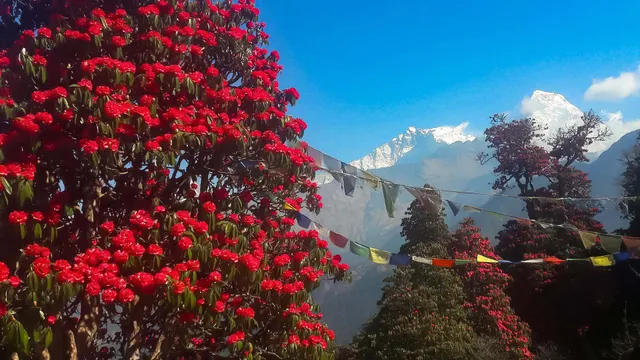Mount Everset- Why it is popular ?
Mount Everest is the highest mountain in the world, standing at 29,032 feet (8,849 meters) above sea level. It is located in the Himalayas, on the border between Nepal and China (Tibet). This mountain is part of a range of mountains that stretches across Asia, including some of the tallest peaks on Earth.
The name "Mount Everest" was given in honor of Sir George Everest, a British surveyor general of India in the 19th century. In Nepal, it is called "Sagarmatha," which means "Forehead in the Sky," while in Tibet, it is known as "Chomolungma," meaning "Goddess Mother of the World."
Everest is not just famous for its height; it's also known for the extreme conditions that exist at the top and during the climb. The mountain’s summit is so high that the air is very thin, meaning there’s much less oxygen, which makes it difficult for humans to breathe. This is one of the main challenges for climbers trying to reach the top. The weather is also harsh, with freezing temperatures, strong winds, and dangerous storms that make climbing even harder.
Climbing Mount Everest is not easy, and it requires a lot of preparation, skill, and equipment. The ascent is usually done in stages, with climbers stopping at various camps along the way to adjust to the altitude and build strength. The climb typically takes several weeks, and climbers need to be physically fit and have experience with high-altitude climbing. They also need to carry special gear, like warm clothes, ropes, ice axes, and oxygen tanks.
One of the most famous routes to the top is the South Col route from the south side of Everest in Nepal. This route involves several camps where climbers rest, adjust to the altitude, and prepare for the final push to the summit. The final push to the top is incredibly difficult, with steep and icy slopes, and many climbers use supplemental oxygen to help them breathe.
However, despite all the challenges, thousands of people have attempted to summit Everest, and many have succeeded. In recent years, the mountain has become a popular destination for adventurous climbers, but this has also led to overcrowding, which can make the climb more dangerous. The growing number of climbers, combined with difficult weather conditions, has led to increased risks, such as long waiting times in dangerous conditions and even deaths.
Climbing Mount Everest has risks, but it has also brought attention to the importance of mountain conservation and the environment. Over time, Everest has become an iconic symbol of human perseverance and adventure. Many people view climbing it as the ultimate test of endurance, but it is also a reminder of the immense power and beauty of nature.
The region surrounding Mount Everest is home to the Sherpa people, who have long been known for their ability to live in high-altitude environments and assist climbers. Sherpas are experienced guides and porters who help climbers carry equipment and navigate the mountain. They are a vital part of the climbing community and have played a major role in many successful Everest expeditions.
In addition to its physical challenges, Mount Everest has cultural and spiritual significance. It is considered sacred by the people who live in the region, including the Sherpas and other Tibetan and Nepali communities. For many, the mountain is not just a place to conquer, but a place of deep reverence and respect.
In conclusion, Mount Everest is a remarkable and awe-inspiring mountain, attracting climbers from around the world who seek to test their limits. But the mountain’s challenges are not just physical – they also include understanding the environment, respecting the local culture, and navigating the risks of overcrowding and climate change. Whether viewed as a scientific wonder, an adventure destination, or a spiritual symbol, Everest continues to captivate the imagination of people every.
Read also:



Comments
Post a Comment